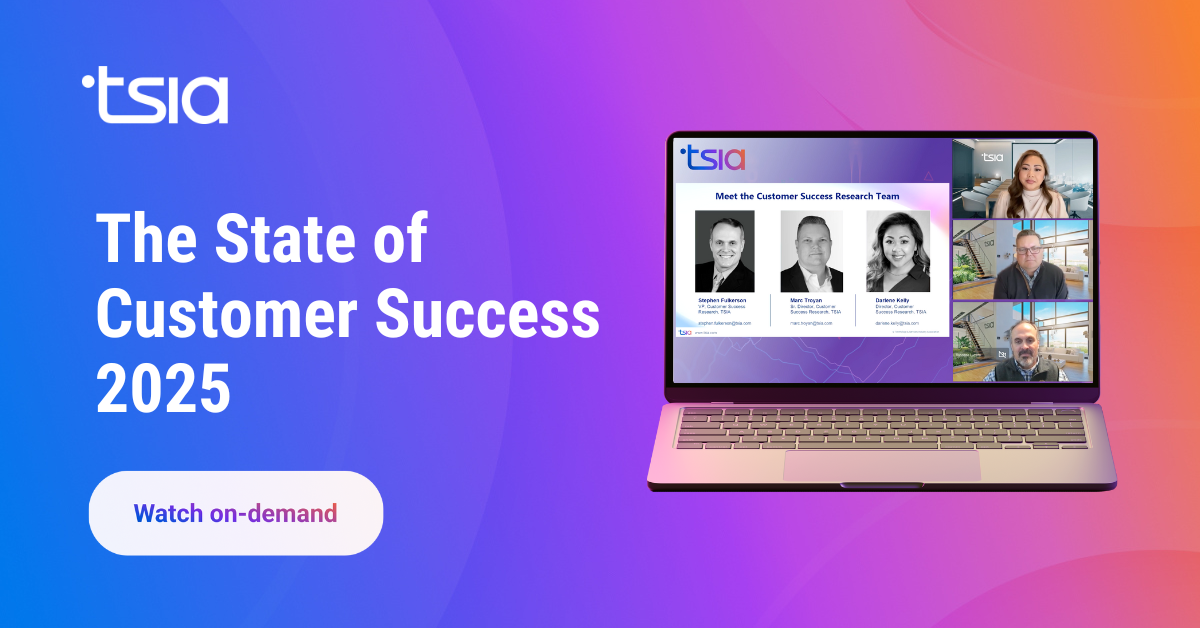Customer adoption is more than just turning on a new tool or clicking around in an app. It's about helping your customers reach the value they expected when they signed on. And when adoption is done correctly, it has a direct impact on customer satisfaction, renewals, and long-term growth.
In this blog, we’ll walk through the three stages of customer adoption—and how you can help your customers move from simply getting started to fully integrating your product into their everyday workflows.
Key Takeaways
- Customer adoption is a journey that extends beyond product usage to enable meaningful outcomes.
- Three core stages—onboarding, engagement, and adoption—define the path to lasting customer success.
- Moving customers through these stages requires a strategic approach, data-driven insights, and effective coordination between customer success and product teams.
What Is Customer Adoption and Why It Matters
Customer adoption refers to how your customers initially start using your product or service, and more importantly, how they continue to use it in a way that helps them achieve real results. The focus is on value—not just frequency of use.
When customers actively use your product in meaningful ways, they’re more likely to stick around. In XaaS business models, where renewals are essential, adoption becomes one of the most critical predictors of customer retention. That’s why measuring and improving adoption is business-critical.
Related: Customer Success Plays a Key Role in Adoption and Retention
Understanding the 3 Levels of Customer Adoption
Customer adoption isn’t all or nothing. Your customers exist on a spectrum—from barely logging in to relying entirely on your product for critical business outcomes. Understanding where your users fall along this spectrum is the key to improving retention, driving growth, and ensuring your technology delivers value.
TSIA has identified three core levels of adoption that help you evaluate where your customers stand—and where they need support.
Level 1: Low Adoption
At this stage, your customers may have access to your technology, but they’re not using it in a meaningful way—if at all. Low adoption can show up in a few different ways:
- Very few users are logging in.
- Those who do log in aren’t using many features.
- Customers struggle to incorporate the product into their workflows.
Often, the issue isn’t that the product lacks value—it’s that customers haven’t been enabled to find the value yet. Whether due to onboarding gaps, a lack of product education, or internal resistance, low adoption is a significant risk of churn.
What to focus on:
- Improve onboarding and early engagement.
- Use data to identify inactive accounts and trigger outreach.
- Provide simple, guided paths to the first value.
Level 2: High Adoption
High adoption means your customers are using your product regularly, and a large percentage of potential users are actively engaged. On paper, it looks like success—and it’s certainly a step in the right direction.
However, high adoption doesn’t always equate to high impact. A customer might be using multiple features, logging in frequently, and generally “doing the work,” but still not seeing meaningful outcomes.
In this stage, the risk is complacency. If customers don’t recognize the tangible business value your product provides, they may not justify the renewal—even if they’re active users.
What to focus on:
- Align product usage with customer goals.
- Introduce use cases tied to tangible business outcomes.
- Start measuring data quality and efficiency.
Level 3: Effective Adoption
This is the gold standard. Effective adoption goes beyond frequent usage; it means your customers are:
- Using the product consistently.
- Engaging with the features that drive real value.
- Seeing measurable improvements in business performance.
At this level, adoption is about outcomes. These customers understand your product, integrate it into their workflows, and can connect its use to cost savings, revenue growth, risk reduction, or other key KPIs. They're your best opportunities for renewal and expansion.
What to focus on:
- Partner with customers to track performance improvements.
- Educate users on advanced features that align with their goals.
- Utilize telemetry and feedback loops to enhance the experience continually.
Related: Adoption Aptitude

Measuring Customer Adoption Across Levels
To move customers from low to high to effective adoption, you first need to understand where they currently stand. This requires more than just tracking logins—you need to measure behavior, depth of use, and impact. Here’s a practical way to think about it.
For Low to High Adoption, track:
- Logins: Are enough of your potential users active?
- Product use frequency: Is usage consistent or occasional for customers?
- Product capability usage: Are they sticking to basic features, or exploring more?
To move from High to Effective Adoption, measure:
- Data quality: Are customers receiving accurate, complete, and consistent data and results that drive value?
- Efficiency: Is your product helping them save time, effort, or resources?
- Effectiveness: Are they seeing real improvements in outcomes like revenue growth, risk reduction, or cost savings?
These metrics don’t just tell you what users are doing—they show you whether those actions are delivering value.
How To Move Customers Through Each Level
Moving customers up the adoption ladder happens through consistent engagement and targeted actions that guide customers from one level to the next.
From Low to High Adoption:
- Make onboarding outcome-focused and straightforward.
- Highlight quick wins early.
- Identify inactive accounts and re-engage them with a clear path to value.
From High to Effective Adoption:
- Use telemetry data to find usage patterns and gaps.
- Guide customers toward features that support key business goals.
- Work with stakeholders to track ROI and impact metrics.
The key is to focus less on product activity and more on the value it provides.
Related: Adoption: The Key Ingredient for Customer Success and Product-Led Growth
Map Out Your Adoption Strategy
Customer adoption is a continuous journey, not a destination. To drive retention and long-term success, you need to move beyond activity metrics and focus on value-based outcomes. So, where do most of your customers sit—is it low, high, or effective adoption?
Once you know the answer, you can take action to guide them to the next level—whether that’s revisiting onboarding, deepening usage, or tying product activity to measurable business results.
Adoption is an ongoing, proactive strategy that ensures your solutions become seamlessly integrated into the customer’s operations. And it’s one of the most powerful levers you have to retain and grow your customer base.

Frequently Asked Questions
What’s the difference between high adoption and effective adoption?
High adoption means your customers are using your product often and across multiple features. Effective adoption means they’re using it in ways that deliver actual business outcomes—like increased revenue, reduced costs, or improved efficiency.
How can I determine the adoption level of a customer?
Begin by reviewing usage data, including logins, session length, and feature activity. Then go deeper by assessing data quality, process efficiency, and whether your product is tied to customer KPIs. These insights help map users to low, high, or effective adoption.
What role does customer success play in driving adoption?
Customer success teams are essential in guiding users through the adoption levels. They provide onboarding support, monitor engagement trends, identify when users are struggling, and deliver proactive strategies to help customers realize the value of the product.
Smart Tip: Embrace Data-Driven Decision Making
Making smart, informed decisions is more crucial than ever. Leveraging TSIA’s in-depth insights and data-driven frameworks can help you navigate industry shifts confidently. Remember, in a world driven by artificial intelligence and digital transformation, the key to sustained success lies in making strategic decisions informed by reliable data, ensuring your role as a leader in your industry.















